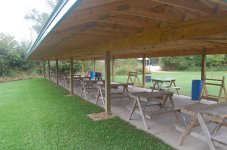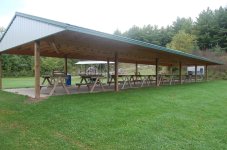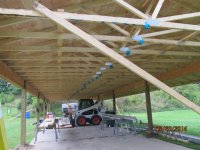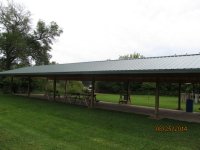Here are two more pictures of what was done at WBBSC, that Jim (xxper) commented on.
We too went on a lengthy quest for information, just like you are asking.
I posted the same type of request for information on this forum and many others, and got back quite a few replies and a lot of pictures.
One of the issues we had was to build something that would work for a wide variety of disciplines.
From shooting bench to service rifle. (Sitting, standing, prone, etc.)
As you can see it looks like a standard "gable" roof, but it is cantilevered out on the forward edge.
Other things that we looked into that affected the design was that of the "blue sky theory".
For which you can do a search for. But to eliminate the shooters view of the sky at the target.
We do shoot some disciplines all year round. And has made a major difference in participation.
It was easy for some to scoff at the idea until they were able to shoot in the rain and under cover from the blazing summer sun.
Sound is the only complaint by some… But it is part of the result that cannot be totally avoided.
Best of luck to you and your project.
Richard









